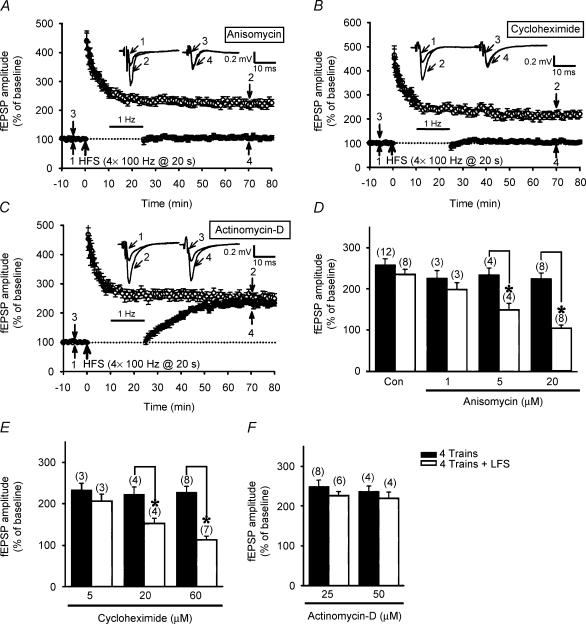Figure 2. The development of synaptic resistance to depotentiation stimulation is dependent on protein synthesis but not mRNA synthesis.
A, summary of experiments showing that preincubation of slices with the protein synthesis inhibitor anisomycin (20 μm; 60 min) permitted persistent LFS-induced depotentiation (LFS-DEP) of four trains of 100 Hz LTP (n = 8; •) but had no effect on the induction of LTP (n = 8; ○). B, summary of experiments showing that preincubation of slices with another protein synthesis inhibitor, cycloheximide (60 μm; 30–60 min), also permitted persistent LFS-DEP of four trains of 100 Hz LTP (n = 7; •) but had no effect on the induction of LTP (n = 8; ○). C, summary of experiments showing that preincubation of slices with transcriptional inhibitor, actinomycin-D (25 μm; 30–60 min), did not affect the induction of either the synaptic resistance to LFS-DEP (n = 6; •) or LTP (n = 8; ○). D, summary histogram comparing the effects of different concentrations of anisomycin on the induction of four trains of 100 Hz LTP (filled columns) and LFS-DEP (open columns). E, summary histogram comparing the effects of different concentrations of cycloheximide on the induction of four trains of 100 Hz LTP (filled columns) and LFS-DEP (open columns). F, summary histogram comparing the effects of different concentrations of actinomycin-D on the induction of four trains of 100 Hz LTP (filled columns) and LFS-DEP (open columns). The magnitude of LTP was calculated at 50 min after HFS and the magnitude of LFS-DEP was calculated at 40 min after the end of LFS. In D–F the numbers in parentheses indicate the number of slices tested. Asterisks represent a significant difference compared with slices not receiving LFS.

